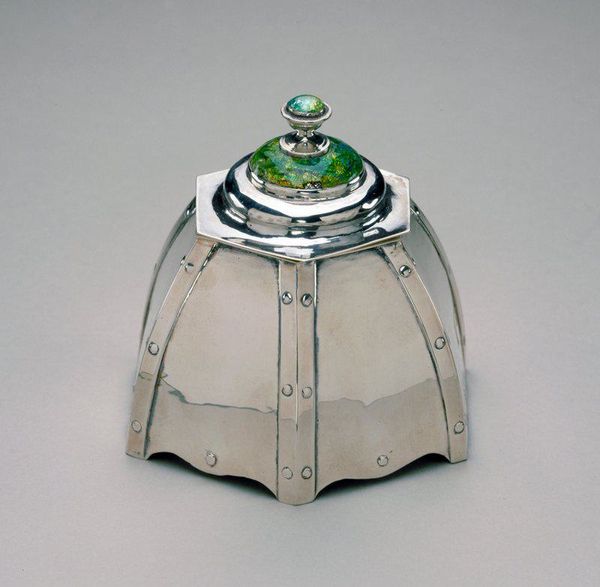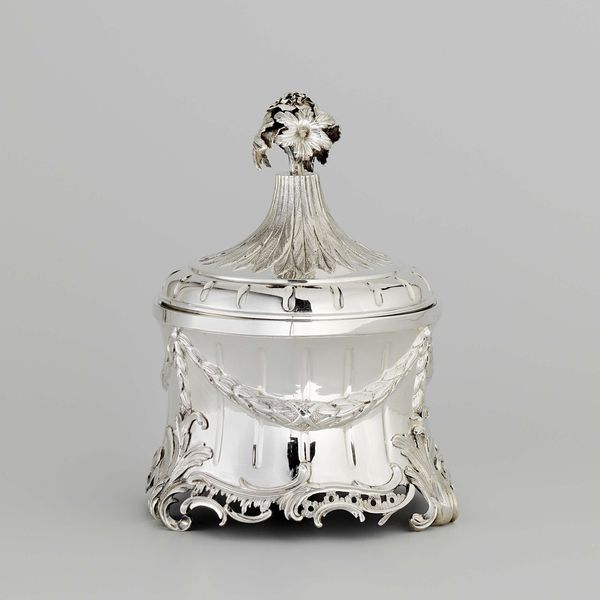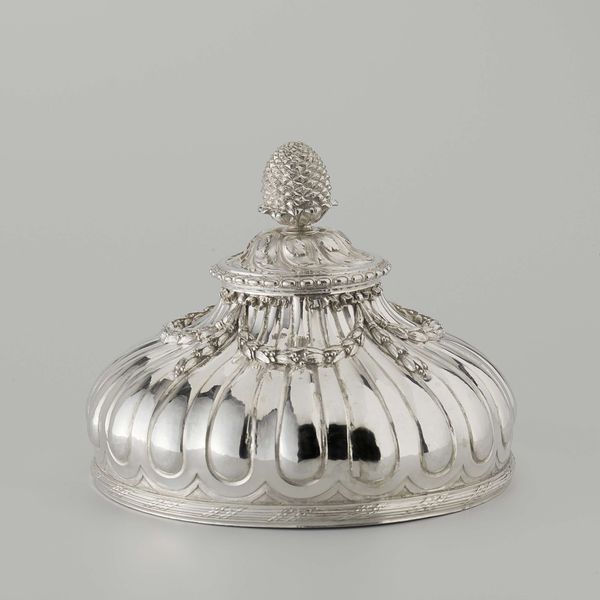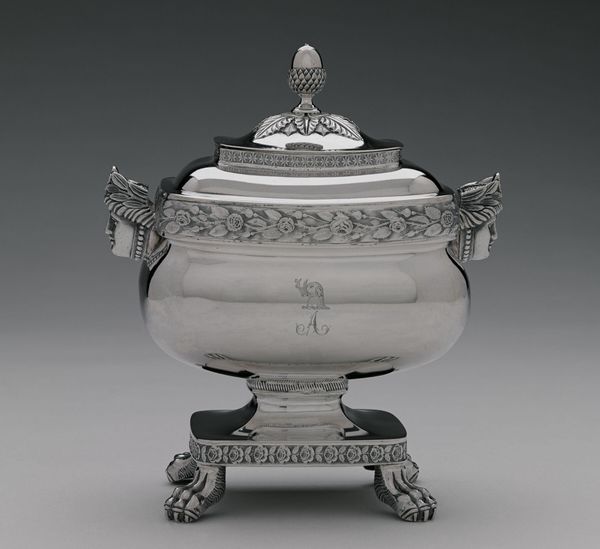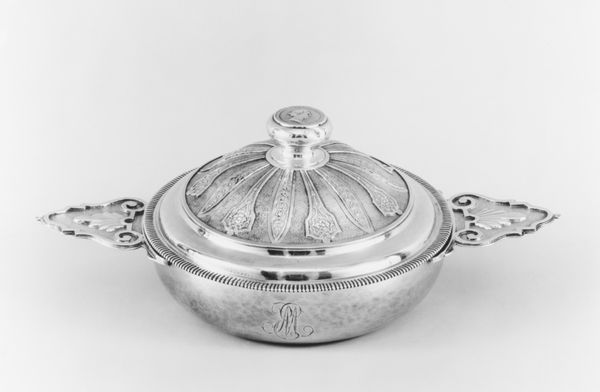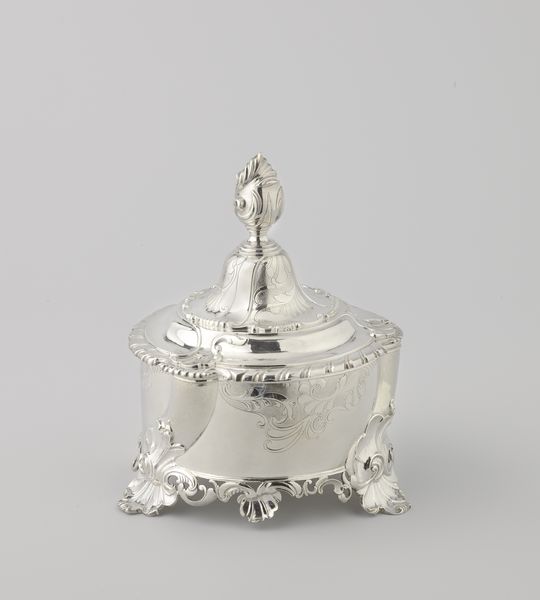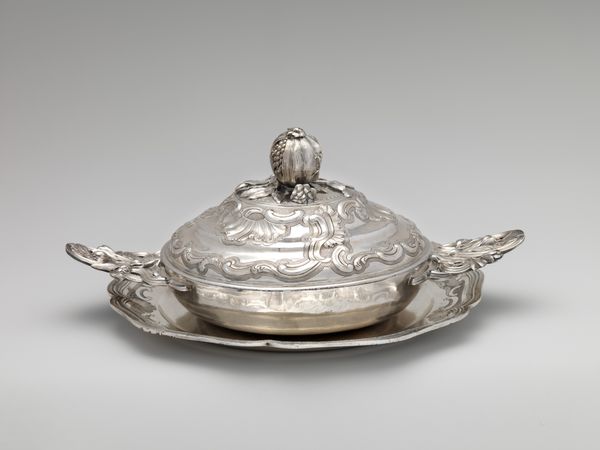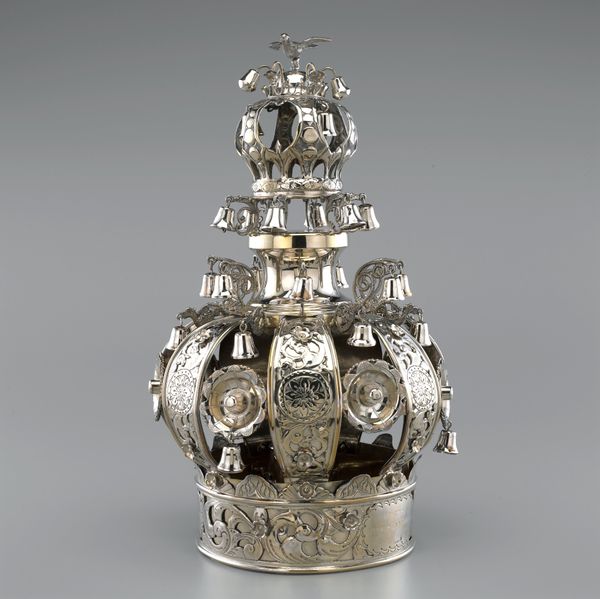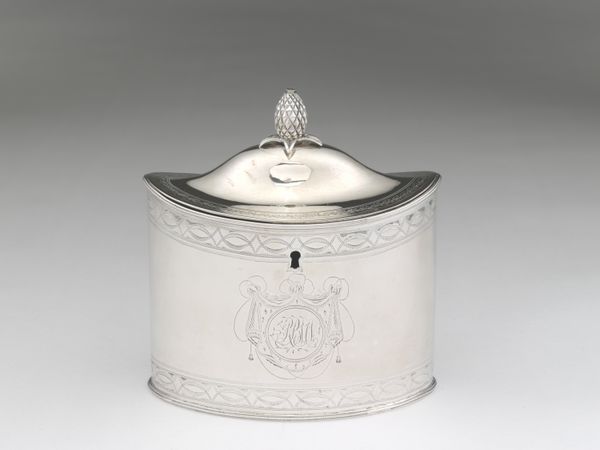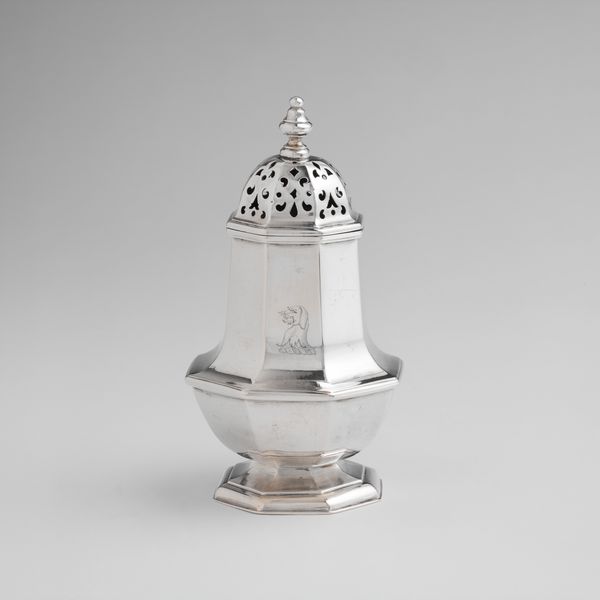
Dimensions: 12.4 Ã 11.1 Ã 8.5 cm (4 7/8 Ã 4 3/8 Ã 3 3/8 in.) 509 g
Copyright: CC0 1.0
Curator: I’m struck by how this silver tea caddy—or perhaps sugar box—resonates with austerity despite its material richness. Editor: It certainly possesses a refined, almost regal quality, doesn’t it? Consider how an object like this—made by Harry Beathune—speaks to the intersection of luxury and colonialism. Curator: Precisely! The ritual consumption of tea and sugar, elevated through objects like this, was fundamentally intertwined with exploitation and trade imbalances. The clean lines belie complex power structures. Editor: But also the enduring allure of precious metals, the way they reflect not just light but the cultural values placed upon them. That finial repeats like a miniature ziggurat. Curator: Yes, and we can’t ignore the encoded messages within the family crest. It's a deliberate assertion of status and pedigree, literally stamped onto everyday life. Editor: Seeing it, I’m left wondering: what narratives did it witness, what secrets did it hold within its gleaming shell? Curator: Ultimately, this is about interrogating how seemingly innocuous objects participate in broader systems of inequality, and how we reckon with that legacy today. Editor: Indeed, by understanding its symbols, we gain insight into the values of its time and perhaps, a path to re-evaluation.
Comments
No comments
Be the first to comment and join the conversation on the ultimate creative platform.
